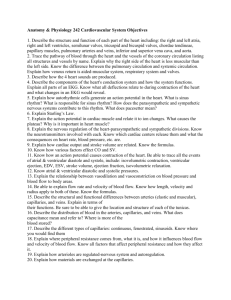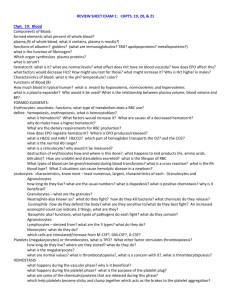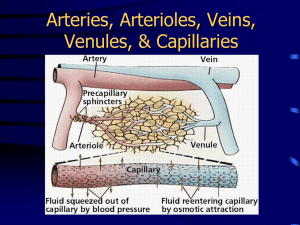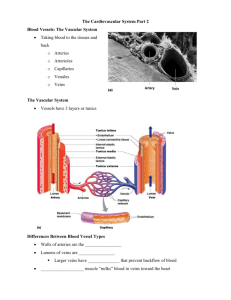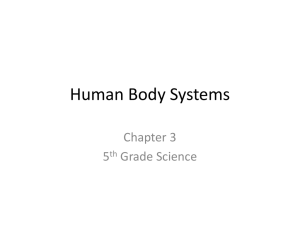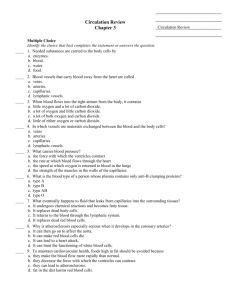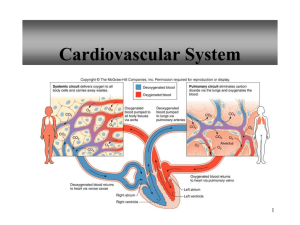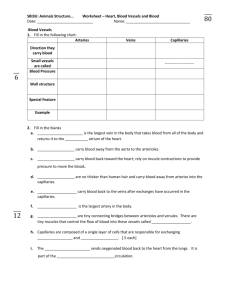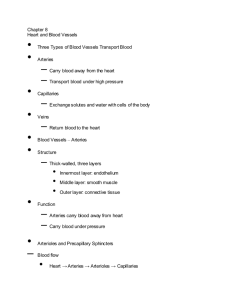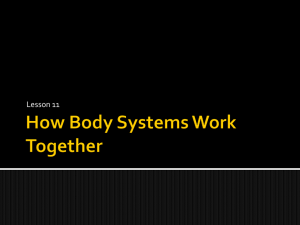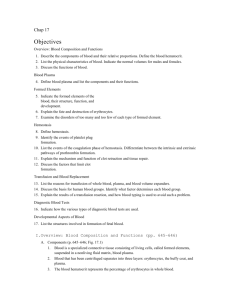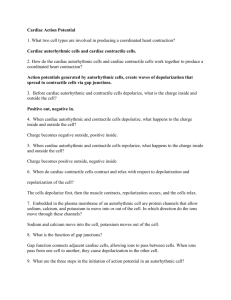answers to ch 16 questions p. 11-14
advertisement
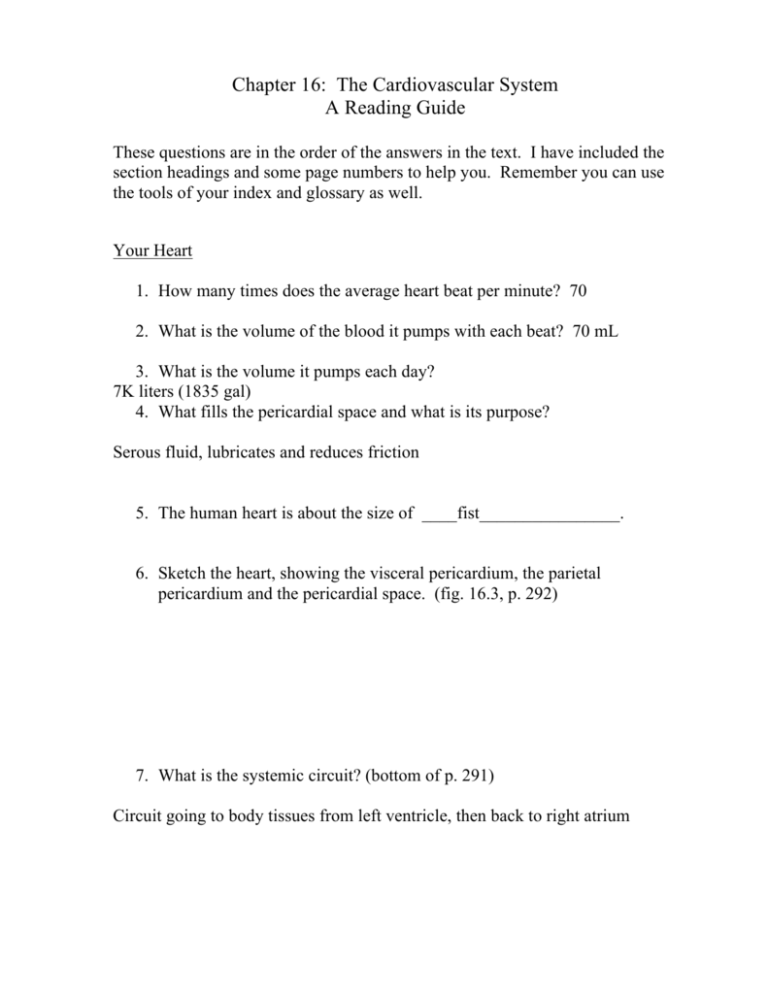
Chapter 16: The Cardiovascular System A Reading Guide These questions are in the order of the answers in the text. I have included the section headings and some page numbers to help you. Remember you can use the tools of your index and glossary as well. Your Heart 1. How many times does the average heart beat per minute? 70 2. What is the volume of the blood it pumps with each beat? 70 mL 3. What is the volume it pumps each day? 7K liters (1835 gal) 4. What fills the pericardial space and what is its purpose? Serous fluid, lubricates and reduces friction 5. The human heart is about the size of ____fist________________. 6. Sketch the heart, showing the visceral pericardium, the parietal pericardium and the pericardial space. (fig. 16.3, p. 292) 7. What is the systemic circuit? (bottom of p. 291) Circuit going to body tissues from left ventricle, then back to right atrium Heart Valves 8. What makes the valves of the heart open and close? (Hint: See figures 16.6 and 16.7.) Passive, due to fluid pressure Electrical Impulse Generation and Conduction 9. How are cardiac muscle cells similar to skeletal muscle cells? How are they different? (p. 295 and p. 140) Striated, > 1 nucleus, contract * Why do you think some cardiac muscles need to be branched? Allows them to form web so they can squeeze 10. What do the intercalated disks allow the cells of the myocardium to do? Communicate so can work together as if one cell 11. What is autorhythmicity and what causes it? Heart cells generate own rhythm, due to slight permeability for sodium, ions leak in and trigger action potential, makes heart contract 12. “All of the vessels of the heart enter and exit through the _base______ of the heart.” (p. 297) 13. What are the 3 purposes of the entire cardiac impulse system? (See the text, not the table, on page 297.) Generate beat, coordinate ventricles and atria, coordinate left and right Cardiac Output 14. What is cardiac minute output? (Check your glossary.) Amt. of blood pumped per min per ventricle 15. In what 2 ways can your body change its cardiac output? Faster heart beat or more pumped per contraction 16. Why does your body need the ability to change its cardiac output? To meet greater demand of exercise Your Blood Vessels 17. What are arterioles? Smallest arteries, connect to capillaries 18. What are capillaries and what is their function? Smallest blood vessels, some so small that blood cells must pass through one at a time; place where gases (oxygen, carbon dioxide), nutrients and wastes are exchanged between cells and blood 19. What are venules? Smallest veins, lead out from capillaries 20. Why are our blood vessels and the chambers of the heart lined with endothelial cells? They are cell type that won’t activate clotting mechanism 21. Why must large arteries be able to stretch? Why must they then be able to recoil? Expand to absorb some of force of blood being pumped under pressure; then need to go back to original shape (get smaller again) to keep blood flowing 22. Why doesn’t blood fill all your capillaries at the same time (2 reasons)? a) don’t have enough blood to fill all capillaries at once b) heart doesn’t have enough pumping capacity to keep up pressure to get blood to all capillaries at once 23. How does the body regulate flow of blood to the capillaries? Medium-sized arteries can constrict, reduce or shut off flow from groups of capillaries (from an organ, for instance) – wd. happen when fight or flight takes blood from digestive system 24. Why must the pressure in the capillaries be low? They’re too fragile, walls too thin to resist much pressure 25. Why must veins avoid pressure build-up and how do they do that? If had pressure, would force blood back to capillaries which have low pressure; large and can’t constrict much 26. What is the function of the valves in our veins? To keep blood flowing only toward heart, even if that’s against gravity • Not in text: In which area of the body do you think veins don’t need to have valves? those above heart
